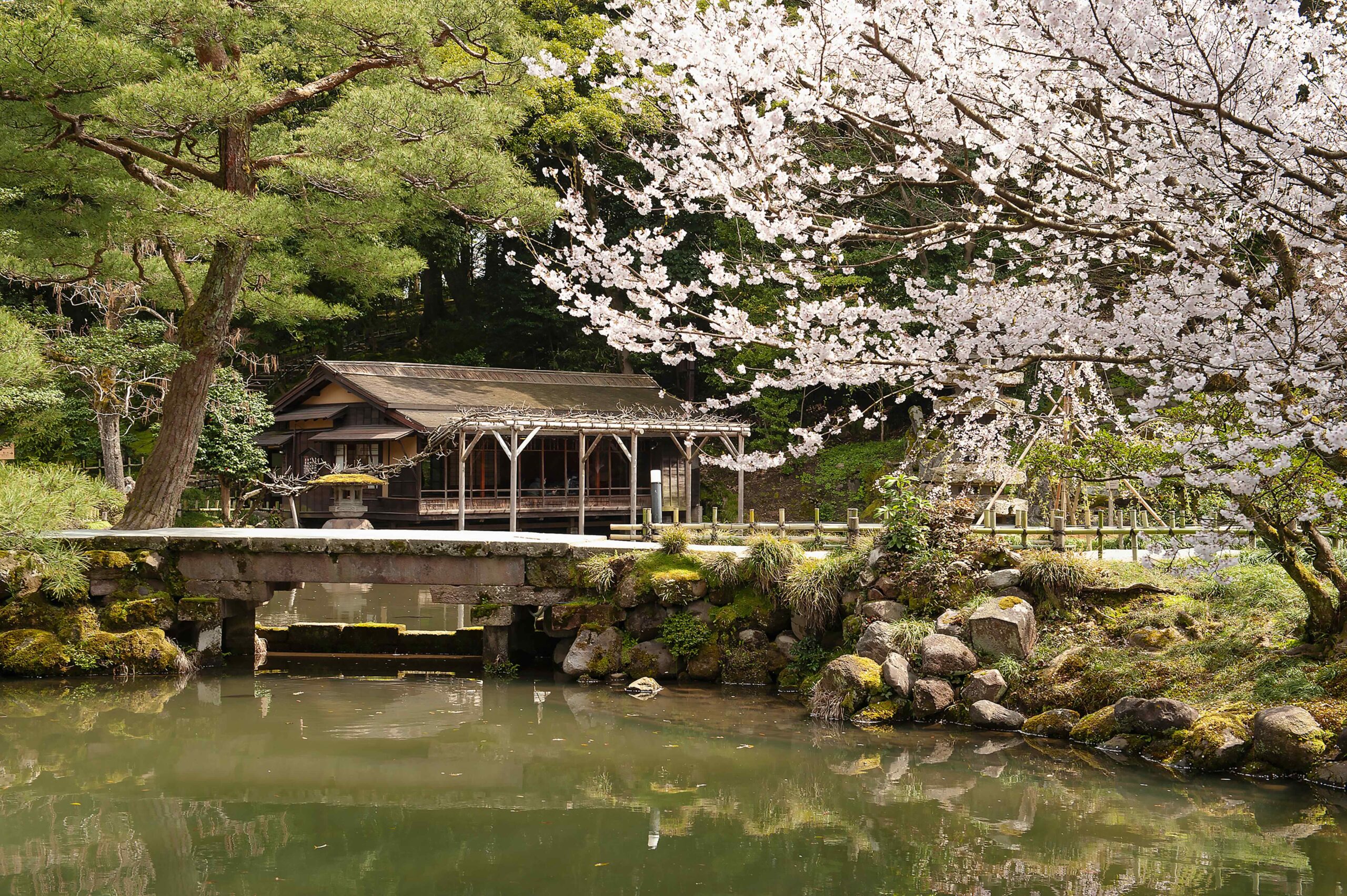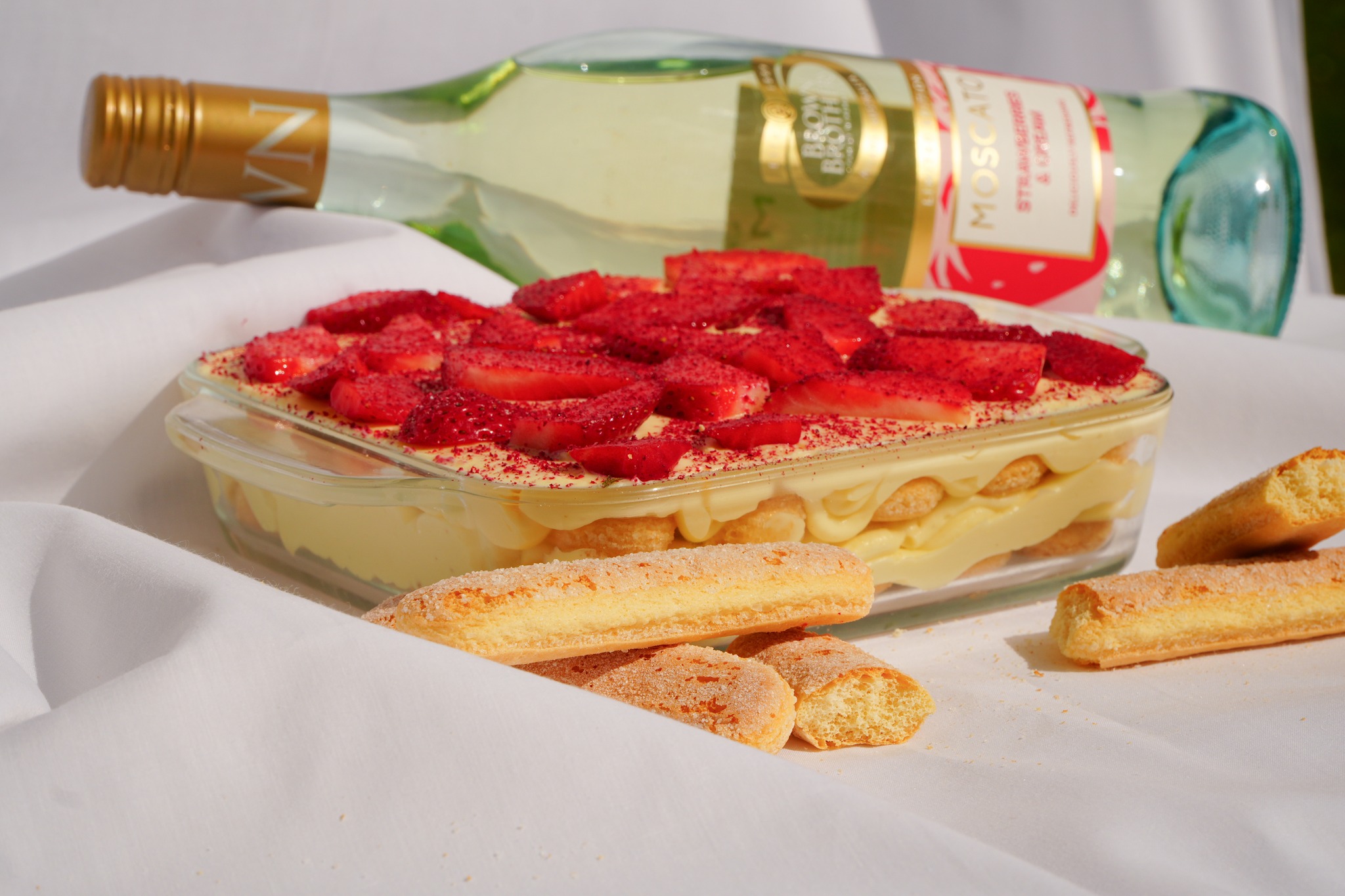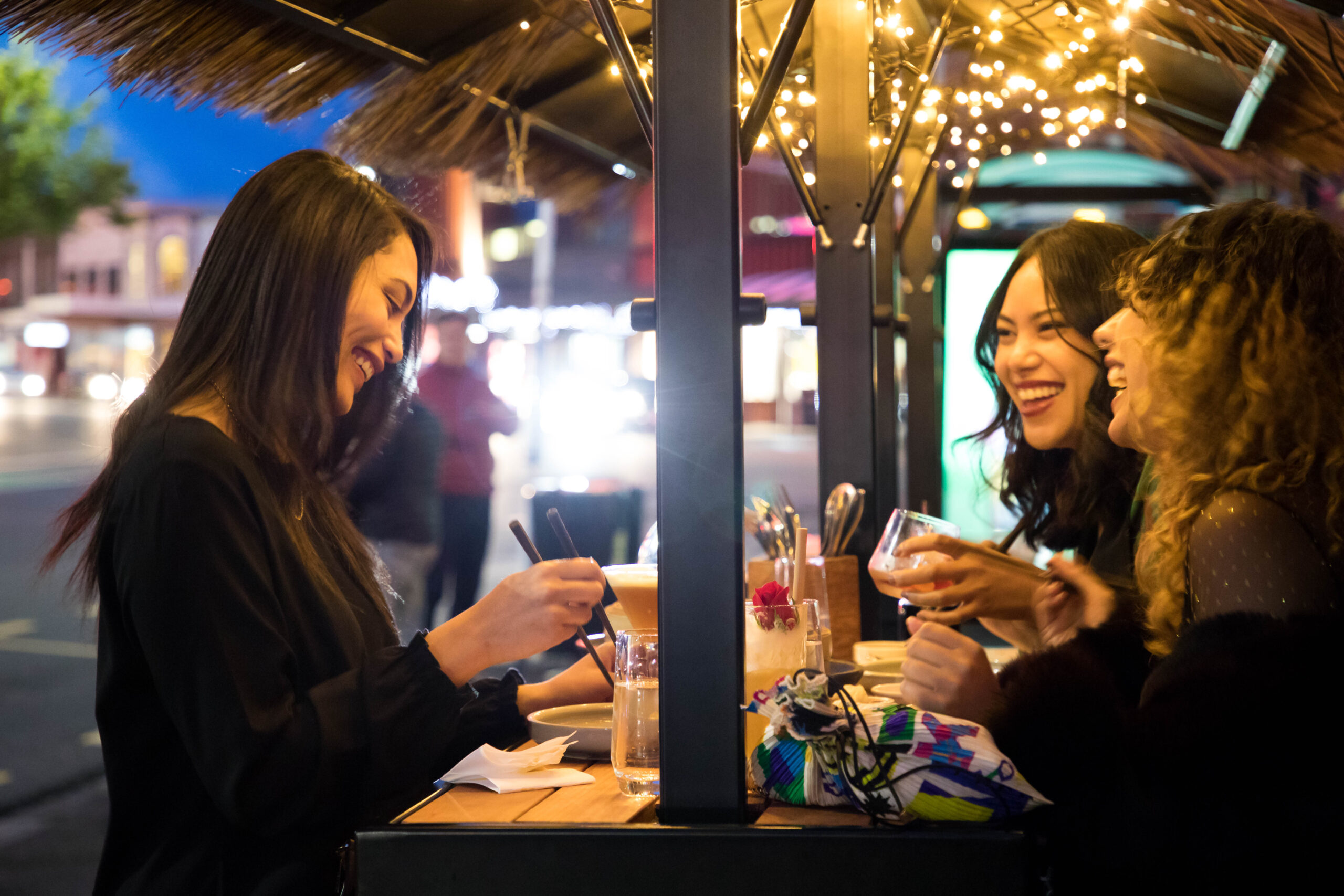Reboot with a Japanese adventure mixing ancient and new.
I’m looking out a train window as rice paddies, country houses and small towns flash by. The view is changing rapidly as we speed through the Hokuriku Shinetsu region on a shinkansen, one of Japan’s famous bullet trains.
Shooting into a dark tunnel the train picks up a serious clip. Just as suddenly we burst out into the sunlight for a momentary vision of a tree-lined valley and a pond, or the silver flash of a river and a bridge before plunging back into another tunnel.
Travel is a brilliant way to reset your mind as an adventure somewhere fresh floods your brain with daily images and inspiration. This is especially so with Japan’s unique mix of ancient and modern. Here are seven ways to reboot when travelling in Japan.
High-rise luxury
Start with a little indulgence at the new eco-chic hotel Mesm Tokyo, located on the capital city’s Tokyo Bay waterfront, in a multiplex called Waters Takeshiba. Opened in early 2020, the hotel only became fully accessible to Kiwi travellers since Japan’s border became visa-free for New Zealanders in October last year. My suite is huge and opens onto a generous balcony with sweeping harbour views. Across the water, the Tokyo Skytree, the world’s third tallest structure, adds to the millions of lights twinkling along the evening skyline.
We arrived via Tokyo Shinkansen Station – Japan’s busiest with thousands of trains arriving and departing each day. Popping up at street level and out onto a city square, we look back at the station – a lovely Amsterdam-inspired red-brick building built in 1914 and repaired after the Second World War. Hundreds of war-time air raids laid waste to 60 per cent of the city and the subsequent rebuild has resulted in a unique mix of old and new, from towering skyscrapers in ultramodern design to Imperial Palace grounds, historic temples and traditional gardens.
Morning light reveals the lush Hama-rikyū Gardens below our hotel, opened in 1946 and protected today by a seawater moat. Futuristic-looking cruise boats skim the harbour. From the pier in front of the hotel, you can travel across the water to explore famous spots in Asakusa, Ryōgoku and Odaiba. On a balcony high above, I enjoy an early coffee made using a copper coffee set and the slow-brew drip method kissaten. Instructions for this and other amenities are provided in a handy tablet. There are calligraphy sets, retro-style bedside phones and pianos in every room that double as music speakers. Bathroom amenities and complimentary drinks come in refillable glass bottles – other eco initiatives include towel fabric innovations and genderless staff uniforms for minimum laundering and maximum efficiency.
At breakfast we down tasty fruit shots which promise to fortify our five senses, while watching silver commuter trains snaking around the tower blocks below.

Travel by bullet
There’s something so evocative about train travel that feels like a return to simpler times. And as trains go it’s hard to beat the speedy shinkansen, famous for being clean, safe and impressively punctual. The bullet train system’s average train delay time over a year is less than one minute. And with more than 10 billion passenger trips over the past 50-plus years, there’s not been a single passenger fatality or injury.
We’re heading to the collective of prefectures called Hokuriku Shinetsu, aiming to explore a little of Japan’s regional side and experience some omotenashi or ‘spirit’ of Japanese hospitality.
Speeding away from central Tokyo the highrises gradually turn to a mix of shopping and industrial areas to houses and apartments. The black tiled roofs of country houses built in traditional style gleam in the morning sun. Among the patchwork of neatly hedged plots of land are cemeteries, or bochi. Mostly square in shape and filled with stone memorials and figurines, they look like extra-large chess pieces set out on a board.
There are mountains in the distance – together they occupy over 80 per cent of Japan’s landmass. It’s early autumn, so gingko leaves are turning yellow, and splashes of vivid pink, deep red and orange are starting to appear among the evergreens.
On the way to Nagano we pass recently harvested rice paddies with rough stubble or watery earth trenches. Any green regrowth will be left to compost under the winter snow. On small holdings rice hangs drying in straw-like bunches. This labour-intensive process dates back centuries but I’m told it makes the tastiest rice.
Onboard, there’s free wireless and plugs at your seat for re-charging devices. The lack of the usual rattles and clickety-clack, plus a culture of only talking quietly on trains, makes for dreamy travelling. On the journey from Toyama back to Tokyo we catch glimpses of Japan’s western coastline. Stepping back onto a clean platform on our return to Tokyo we pass a guard holding an open bag to collect any rubbish.
Drink tea like John and Yoko
Karuizawa is a pretty, slow-paced town set among trees at the base of Mount Asama in south-central Nagano. Visiting the historic Mampei Hotel you can see John Lennon’s favourite piano from when he and Yoko would holiday there. You can book to stay in the same second-storey bedroom as the famous couple, or, downstairs in the tea house, enjoy tea and local speciality jams on the café terrace. Royal Milk tea was added to the menu after Lennon reportedly showed the locals how he liked his brew.
Karuizawa dates its villa holiday fame from early visits by 19th century Canadian missionary Alexander Croft Shaw. Impressed by the setting and climate, Shaw endorsed the leafy town as a summer retreat, and it’s been a popular wealthy Tokyoite getaway ever since. The tranquil Shaw Memorial Church is worth visiting and for shoppers there are quaint streets to wander. West of the old town, in Naka-Karuizawa, are trendier shops and dining areas, including Harunire Terrace in a forest setting.
Kumobaike means ‘swan pond’ but it’s ducks that have the run of this pretty lake, located 1.5 kilometers northwest of Karuizawa Station – surrounded by tall trees which turn gorgeous autumnal shades from mid-October to early November.

Learn an ancient craft
In the Nagano town of Saku is the world’s first saké brewery lodge, where you can learn saké secrets from sixth-generation brewer Tyler Ide.
Saké is brewed using polished rice and an exacting process involving the simultaneous conversion of starches to sugar, and sugar to alcohol. The national drink dates back at least to 712 when it was included in the Kojiki, Japan’s first written history. But breweries typically keep doors shut to visitors and saké’s secrets are not well known today, even by many Japanese.
Thanks to glacial water sources and a suitable natural environment, Saku is a key rice-growing and saké brewing region. It’s home to 13 breweries, including the 300-year-old Kitsukura Shuzo. In 2018 the young mum and entrepreneur Mariko Tazawa had the idea of sharing saké secrets with visitors and creating a guest lodge using the brewery’s old hiroshiki, or chamber, where brewers once slept.
Kurabito Stay has a simple minimalist aesthetic including traditional features, such as the strictly enforced practice of removing your shoes at the door. Downstairs in the lodge we have brewing lessons and sample various sakés from an all-you-can-drink dispenser. Next door in the brewery, we wash rice for steaming to making koji, a fermented ingredient that’s key to saké and other Japanese cuisine. We sort rice grains and learn how to make Amazake, a delicious and super-nutritious fermented drink. Later, we walk to a local restaurant for dinner and more saké sampling.
Upstairs at the lodge, a narrow corridor leads to small wood-panelled bedrooms with traditional floor mats, futons for sleeping and sliding wooden panels for glimpses to gardens beyond. Like the brewery, you enter the bedrooms through nijiriguchi-style doors you have to bend to pass through.
“It helps everyone to stay humble,” laughs Tazawa.
Visit a flower town
To spend an evening in the company of geisha is to connect with a centuries-old tradition.
In Kanazawa city, in the Ishikawa Prefecture, we visit the Higashi Chaya District, a hanamachi or ‘flower town’ where geisha have traditionally lived and worked. Kaikaro is the largest chaya, or tea house, in Kanazawa and at more than 195 years old, it’s listed as one of the city’s historical buildings.
It’s hard to know what to expect as we pass the mysterious shutters of this elegant old building and head up the polished stairs. Today, geisha traditions are lost or in decline across Japan and many old tea houses have been converted into restaurants and boutiques, which makes it extra special to be invited inside.
Our initial awkwardness is compounded as we sit on the wrong cushions set out on the floor. Lady Baba, the Okami šan, or house mother and party organiser, is a skilled hostess, expert in the art of putting guests at ease and soon we’re all chatting, laughing and having a surprisingly enjoyable time.
Our many-course dinner arrives in a series of polished trays and complicated boxes with drawers. In between, the geisha entertain us with dances, songs and playing the shamisen and drums. Geisha time used to be measured according to the burning of incense sticks and too soon this time is up and they’re off, giggling as they bustle away down a hidden stairwell. Later, Lady Baba gives us a tour of the chaya.
Chaya are traditionally known for their exclusivity, operating according to strict referral-based bookings, but Kaikaro is a little different in that it opens some performances to the public. As a fifth generation geisha, Lady Baba says she has to do what she can to keep the traditional practices going. “It’s in my DNA,” she says.
Nature cultivated and wild
There are six recognised features of a great garden: spaciousness, seclusion, artifice, antiquity, use of water and panorama. The old private garden Kenrokuen, in Kanazawa, is considered one of Japan’s most beautiful as it incorporates all six, with characteristics typical of the Edo period (1603-1868). Across a bridge is the old gates and restored remains of Kanazawa Castle.
For nature on dramatic scale we head to the Toyama region’s Kurobe Gorge, a ravine in the Northern Japan Alps. From Keyakidaira Station we ride the Kurobe Gorge Railway in open-aired and windowed trolley train carriages originally built to aid Kurobe Dam construction workers. In a winding, 20-kilometre trip we cross more than 20 bridges and barrel though 40-odd tunnels. Forested slopes stretch high on either side, their dark green woods splashed with trees turning red and gold, while the turquoise river water gushes below. Options to explore range from hard core tramps to ambling along wide mountainside paths.
Outdoor onsen
The Toyama region is known for its onsen, or hot springs. We chose a small outdoor onsen, set among trees above the river bank. Japanese onsen are gender segregated and bathers are naked. After a quick wash in fresh water we’re soaking in the steaming mineral water of the rock-lined pool, lulled by the sound of the rushing river below.
Later at the Onyado Nono Hotel Toyama there are deep wooden bathtubs in each room that fill with hot mineral water, as well as saunas, indoor and outdoor onsen in varying levels of heat and a chilled plunge pool. In one corner, a push of a button delivers a pulsating jet of water from above that’s expertly angled for massaging tense shoulder muscles – perfect for soothing body and soul after a day of exploring.





